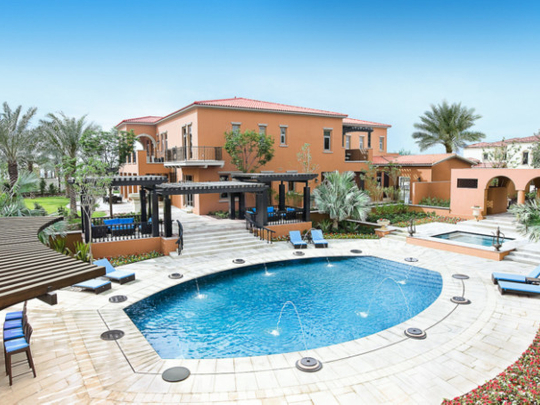
The global luxury property market stays relatively immune to the economic and political trends that drive the general housing market, according to a report by Christie’s International Real Estate. The question is, when is your dwelling in the UAE considered a luxury property? Does it have to be valued at more than $1 million (about Dh3.67 million) to count?
A luxury property can be defined as anything priced within the top 10 per cent of a given real estate market, says John Vincent, Sales and Leasing Manager, Algebra Real Estate. “In most markets, it is a property that is valued at more than $1 million. However in select markets, such as the UAE, this percentage can increase to the top 15 per cent, and properties valued in excess of $4-5 million.
“Properties just outside of these parameters also tend to be included in the luxury category if they have unique features such as a premium location in a prestigious community or higher quality finishing that make them stand out.”
Simply being located in Dubai — which ranks third out of 111 cities in JLL’s City Momentum Index and is rated as one of the world’s most dynamic cities alongside San Francisco, London and Shanghai — doesn’t automatically mean any home purchased here is considered a luxury property.
“A combination of elements comes into play when looking at the luxury aspect of a property,” says Mohammad Al Habbai, Chief Officer for Urban Planning and Infrastructure, Dubai Properties Group (DPG). “Location always makes a difference to buyers and we’ve noticed that demand is currently on the rise for quality properties in prime locations such as Dubailand, owing to its proximity to the Expo 2020 site.”
Waterfront views or locations adjacent to prestigious golf courses will add value to properties as these are highly desirable features. But, Vincent says, “Location alone cannot categorise a property as luxury. Other factors must also be accounted for.” A spacious layout and premium finishing are two of the more important features any property must have in order to be classified as a luxury development, says Al Habbai.
“Buyers, especially end users, look at a property purchase as a full lifestyle package, which means that the overall offering is what defines developments as luxurious or not. This includes the provision of community and leisure facilities such as schools, gyms, community centres, restaurants, nurseries, pool lounges, walkways and play areas among other things.”
DPG has seen growth in the villa segment, which prompted the launch of additional units across some of its communities that recorded strong sales results, adds Al Habbai.
Penthouses personify luxury living as do island properties, although there are pitfalls to buying an off-plan island development. Rajiv Ghanekar, Associate Director, Fine and Country, says, “Buy a ready property, where primary problems have been resolved.”
Issues with accessibility, utilities and basic conveniences on an island, the time frame for the completion of a project, permissible designs and elevations for villas are some common problems, he adds.
For now, innovative luxury properties continue to fuel Dubai’s need. These include DPG’s Manazel Al Khor residential project overlooking the Dubai Creek, and Indigo Zen’s tropical paradise east of Arabian Ranches, replete with landscaped greenery, water features and meditation zones.











